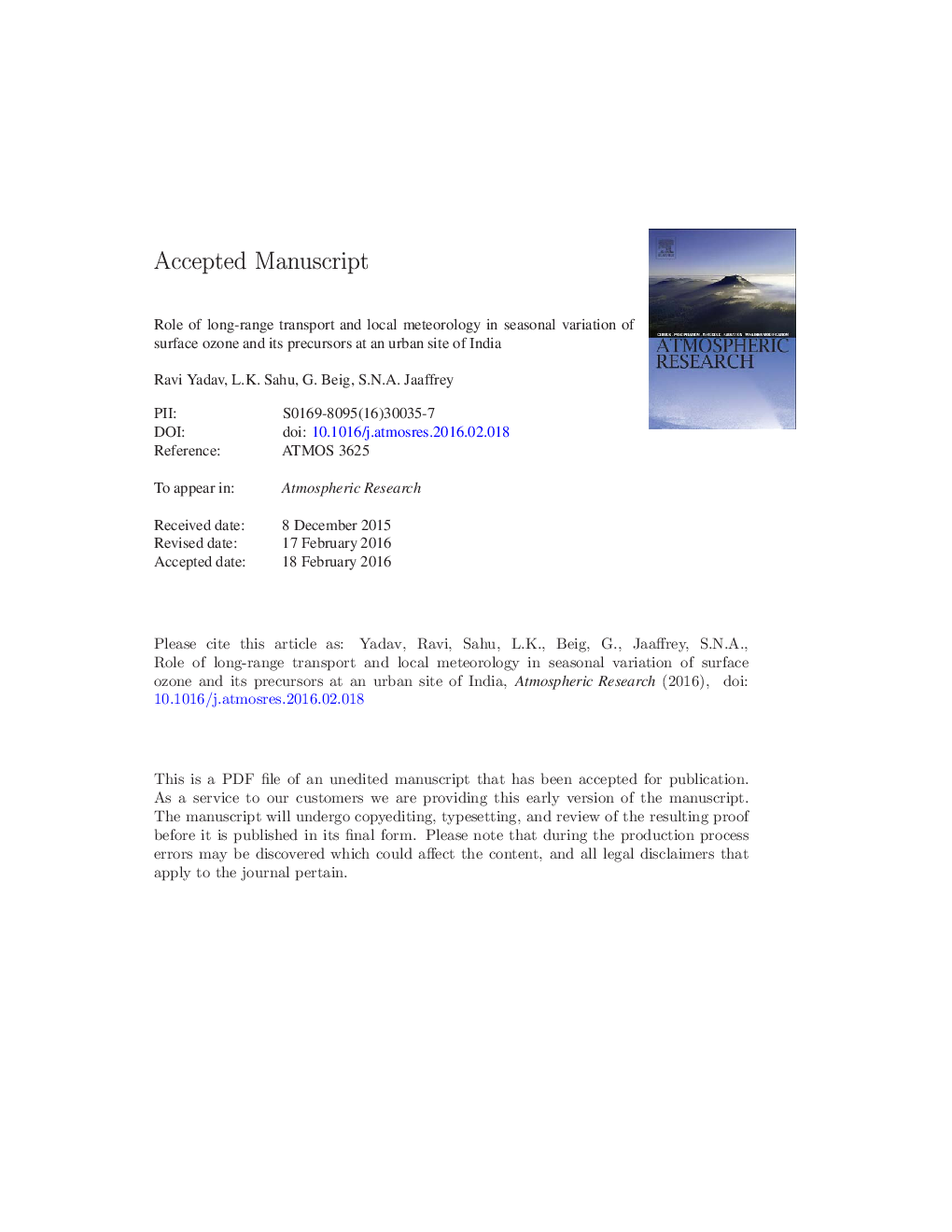| Article ID | Journal | Published Year | Pages | File Type |
|---|---|---|---|---|
| 6342938 | Atmospheric Research | 2016 | 44 Pages |
Abstract
This study is based on the continuous measurements of ozone (O3), carbon monoxide (CO) and nitrogen oxides (NOx) at a semi-arid urban site in Udaipur, India during the years 2011-2012. The mixing ratios of trace gases show strong and weak diurnal variations during the winter and monsoon seasons, respectively. The temporal changes in local emission and PBL depth play an important role in the diurnal variation of trace gases. The daily means of O3, CO and NOx were in the ranges of 5-53 ppbv, 121-842 ppbv and 3-29 ppbv, respectively. The mixing ratios of trace gases were highest and lowest during the winter/pre-monsoon and monsoon seasons, respectively. In the winter season, the lowest of O3 during night-morning hours was caused by the efficient loss due to titration and deposition compared to other seasons. During the winter to the pre-monsoon period, higher levels of trace gases were due to regional biomass burning and long-range transport of continental pollutants. However, strong convection, rainfall and transport of oceanic air resulted in the lowest concentrations of trace gases during the monsoon season. The O3min values tend to increase slightly with increasing values of Tmin while COmax and NOxmax decrease rapidly with increasing values of Tmin. The levels of CO and NOx decreased with increasing wind speed, while O3 tends to increase with wind speed. The rates of change of O3 (dO3/dt) were about 3.7 ppbv hâ 1 and â 4.5 ppbv hâ 1 during the morning and evening hours, respectively. Exceptionally high levels of trace gases during the Diwali (festival) period were due to extensive use of firecrackers from evening till morning hours. The enhancements of O3, CO and NOx compared to normal days were about 61%, 62% and 23%, respectively.
Related Topics
Physical Sciences and Engineering
Earth and Planetary Sciences
Atmospheric Science
Authors
Ravi Yadav, L.K. Sahu, G. Beig, S.N.A. Jaaffrey,
